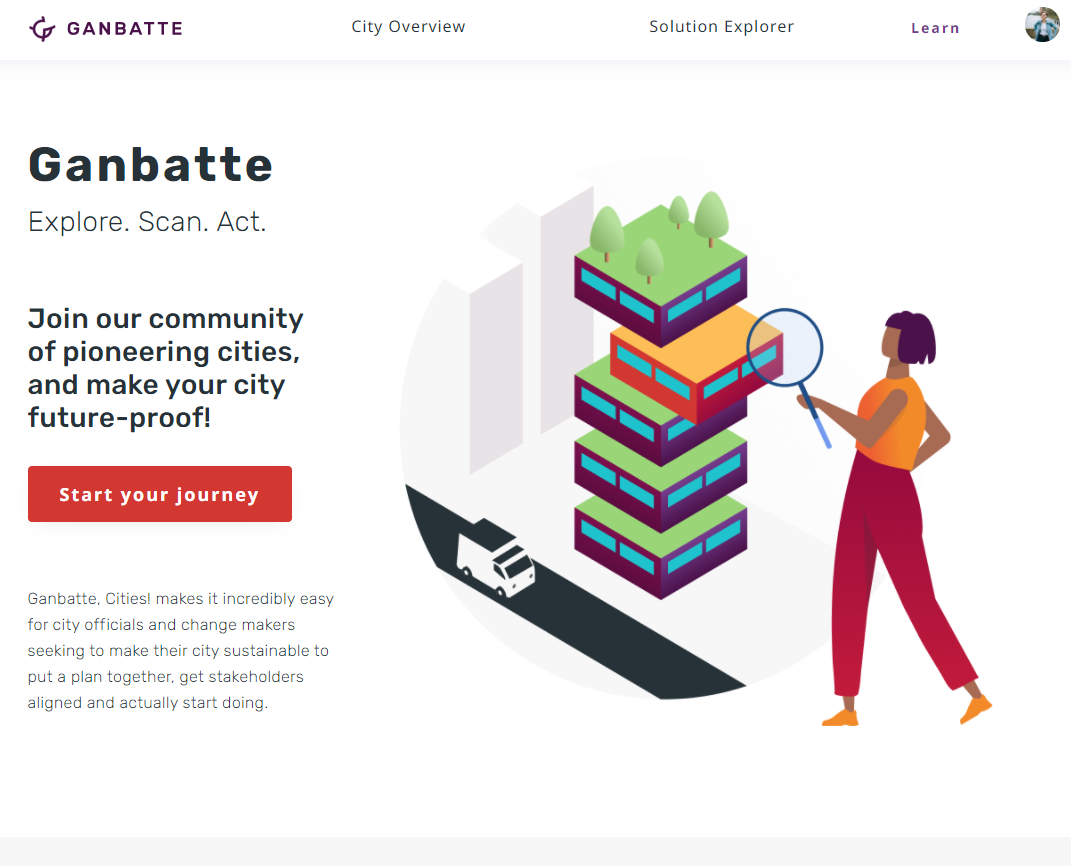This article was originially published on the Circle Economy's Blog.
We don’t have time for a one-by-one approach: digital tools can accelerate the much needed circular transition.
An interview with Ivonne Bojoh, Head of Digital and Interim COO at Circle Economy, written by Laxmi Haigh, Lead of Editorial at Circle Economy

Circle Economy is set to launch a new digital platform to accelerate the circular transitions for businesses, cities and nations around the world. Photo by NASA on Unsplash
‘Technology can be a tremendous force for good. When leveraged for the right purpose it can improve the state of the planet at an incredible rate.’
Ivonne Bojoh, quoted above, is no stranger to working on pioneering technology. With a background in digital start-ups across Europe and Southeast Asia, she joined Amsterdam’s Circle Economy as Head of Digital. Her goal? To push the pedal on circular economy adoption across the globe, embedding digital tools in the process. In a space long dominated by consultancy, pushing the digital agenda across the circular economy landscape is indeed pioneering — and necessary. But we’re in a race against climate breakdown, and to beat it, we need your — everyone’s — help.
Circle Economy, an impact organisation based in Amsterdam, wants to boost global circularity from its current 8.6% to 17%. A 17% circular world could, according to analysis, vastly reduce global resource consumption and reduce greenhouse gas emissions by 39%, thereby limiting warming to well-below 2-degrees. Integrating circular strategies into global systems — across businesses and national and local governments — will allow the world to transition away from the harmful linear economy practices that have dominated for years and led us down a destructive path. The current global focus on phasing out fossil fuels is — while incredibly important — is not enough to truly mitigate climate change.
And there is no question about it: climate breakdown is no longer knocking politely at our doors, it’s broken down the barricades and placed itself dominantly at the head of the table. To expel it, we need to scale the knowledge and best practices that we have in our holdalls to new heights. Circle Economy is well-positioned to drive this scale-up as it harbours ten years worth of circular economy knowledge.
‘From frameworks to methodologies, we know what works and what doesn’t when it comes to implementing circular change. All of this knowledge is being leveraged from one client to the next. By leveraging technology we can distribute knowledge, data insights and provide tooling anywhere, anytime and without limits,’ says Ivonne.
Circle Economy is set to launch a new digital platform to accelerate the circular transitions for businesses, cities and nations around the world. And what does success look like? By the end of 2023, ‘we aim to have 300 businesses, 1,000 cities and 70 nations actively using the platform to gain insights, promote action and connect with each other and track their progress towards a circular economy.’ The platform to drive this impact? Our latest launch is named after the Japanese term for ‘go for it’: Ganbatte. Because we have no time to lose.

Circle Economy is well-positioned to drive this scale-up as it harbours ten years worth of circular economy knowledge. Photo by Farshad Rezvanian on Unsplash
The future is digital; the future is circular
The fourth industrial revolution has spurred technical breakthroughs and digitalisation across sectors. With climate breakdown being the most pressing issue of our time, technology has importantly shaped the sustainability and climate mitigation agenda, from renewable energy power grids to carbon tracking technology, and so much more. This has created an exciting landscape where everything is becoming connected, software-based, data-generating and automated.
We must take advantage of this to make the most of Circle Economy’s ten years of circular knowledge — a gold mine.
Circle Economy’s Circularity Gap Report work with nations, for example, has garnered rich findings to guide action. In Norway’s report, specific circular interventions across business and industry could increase Norway’s circularity from 2.4% to nearly 50%, and cut the country’s carbon footprint by 63%. Meanwhile, in the Netherlands, the analysis located context-specific action that could help the country reach its goal of a fully circular economy by 2050. In Prague, the local City Circle Scan led to the implementation of a large-scale biogas plant, city-wide consumer goods sharing services and a single-use plastic ban, as well as the eradication of pesticides and synthetic fertilisers from all 1650HA city-owned land.
Ultimately, Circle Economy has supported over 80 businesses, 30 cities and 20 nations. It also boasts the largest online repository of circular case studies demonstrating on-the-ground action, data structures for over 4,000 cities and a monitor tracking the number and range of jobs that form a circular economy. ‘It’s time to funnel this knowledge into a digital form so that it can reach thousands of more stakeholders,’ notes Ivonne.
And now is a unique window of opportunity. Businesses, cities and nations around the world are now looking to turn their COP26 promises, pledges and policies into action. What they need is a tool that can guide them toward best practices, based on on-the-ground knowledge and up-to-date data.
This is where Ganbatte comes in.
Circle Economy’s 2022 impact at a glance. Read more in our Impact Report.
A digital platform can disseminate knowledge — fast — and amplify it
‘We need to act now and share our knowledge — and fast. The best way to do this is to use a digital platform as an amplifier. It is an essential distribution platform for our hard-earned knowledge,’ says Bojoh. And the magic here lies in the sheer number of people a digital tool can reach.
With a digital platform that holds thousands of datasets from around the world, 1,000 cities could effectively search for, identify and implement circular solutions concurrently. Ganbatte will consist of three levels to support the implementation of an action-focused circular economy:
-
Explore: Set a baseline for circularity on the business, city or nation level.
-
Scan: Identify levers for change.
-
Act: See how to take effective action.
But time is not on our side and we need your help
In bringing Ganbatte to market, there are three challenges, explains Ivonne. ‘First: time is not on our side. We need to develop and launch powerful digital tools as soon as possible to ensure businesses, cities and nations have the opportunity to implement the recommended circular strategies. This is imperative in light of the climate targets that we must reach to protect our futures.’
Secondly, Ganbatte will offer case studies collected from around the world. ‘To ensure we can distribute the rich knowledge out there, we need everyone out there who has tried, succeeded or failed with any circular strategies to share their stories so others can learn from it.’
And finally: funding. Ever since the Paris Agreement came into effect, climate tech investments have surged around the world, growing nearly five times from $6.6 billion in 2016 to over $32 billion in 2021. ‘We need to ride this wave!’ We are grateful for the support we have received from trusts and foundations, and continue to seek support for our multi-year roadmap.
We know that a global circular economy can mitigate the worst impacts of climate breakdown: our hurdle now is translating theory into action on a world-wide scale. Information needs to be accessible to all businesses, cities and nations — not just those that can afford it. Ganbatte can take us beyond a one-by-one approach that just scratches the surface of work to be done — driving us firmly onto the path toward a future-proof world.

Ganbatte is set to launch later this year. Watch this space!
Learn more about Circle Economy’s digital portfolio and data capabilities
Circle Economy’s digital tool collection is large — and growing. From measuring the number of circular jobs and skills that currently exist in different countries, cities or sectors with the Circular Jobs Monitor, to an open-source online library — the largest in the world — of circular economy case studies in the Knowledge Hub to an online tool for businesses to measure circularity in the Circle Assessment Tool. We also drive the formation of data alliances which organise and increase access to data, as well as encourage cross-sectoral collaboration. Learn more on our digital page.


